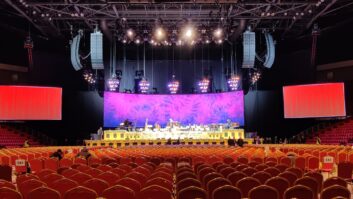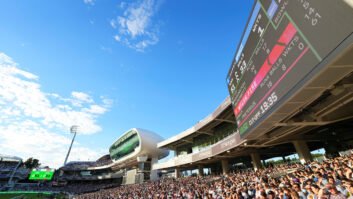
The UK recently became the 91st country to endorse the Minamata Convention on Mercury – a treaty aimed at eliminating all electrical devices containing mercury by 2020. It’s named after the city in Japan, which was seriously affected by a case of mercury poisoning in the 50s, which killed 900 and harmed a further 2,265.
Casio has long been an advocate of the treaty, as a Japanese technology company, it’s an issue which is close to home. Although mercury emissions from manufacturing of consumer products is low in comparison to activities such as mining and burning of fossil fuels, it’s still a factor and the AV community, in particular, should be aware of the problems associated with products that contain mercury.
Playing an instrumental role in protecting the environment has always been at the core of Casio’s manufacturing ethos. We were the first projection company to introduce our mercury-free technology to the market in 2010 with our laser and LED hybrid light source and we remain the only manufacturer to have expanded this to its entire range.
“It can be difficult for companies to embrace green manufacturing in a cost-effective way and many are reluctant to factor this spend into their budgets if it has an impact on profits”
Identifying this alternative light source did not come without its challenges – the biggest obstacle being that pure LED lamps do not possess the light intensity that projectors require to produce brilliant results. This led us to develop a hybrid laser technology, entirely unique throughout the world, consisting of a combination of LED modules with lasers. The result is a mercury-free light source that produces up to 3,500 ANSI lumens and provides constant brightness for up to 20,000 hours without any loss of quality. During that time, users of conventional projectors would need to replace up to nine mercury-vapour lamps.
It can be difficult for companies to embrace green manufacturing in a cost-effective way and many are reluctant to factor this spend into their budgets if it has an impact on profits. The awareness of global warming has helped – China has recently shut down 40% of its factories to minimise pollution. Manufacturers need to have financial foresight to take advantage of the long-term savings that come with being green.
The good news is there are many new types of equipment which can cut energy consumption by 70% or more, so it’s a question of investing in the right technology. Lamp-free projection, for example, can lower electricity costs by up to 40%; an important factor for budget-stretched IT managers. When compared with our competitor lamp-based projection manufacturers, there is a huge difference in power output: 270W versus 150W with lamp-free technology.
“From other conversations we’ve had with our end users, we’ve noticed an increase in demand for environmentally friendly technology and lamp-free technology ticks all the boxes”
Lamp-based projectors also involve longer start up times for end users – less than ideal for busy time pressed teachers eager to get going with their lessons. They take approximately 70 seconds to achieve maximum brightness, compared with Casio’s quick start up time of five seconds. When it comes to brightness levels, our laser and LED light source technology maintains consistently clear and vivid images, versus lamp-based projection, which end users often tell us experience deterioration of luminance much too early on in the projector’s lifetime.
From other conversations we’ve had with our end users, we’ve noticed an increase in demand for environmentally friendly technology and lamp-free technology ticks all the boxes. We’ll even recycle your old projectors in exchange for school vouchers – saving you the hassle and rewarding you in the process! Having a sizeable presence in the education market, end users are understandably conscious of the harm that mercury can cause, especially when dealing with broken bulbs from lamp-based projectors. Not only do these involve hefty costs for lamp replacements, especially when considering multiple projectors installed across a school or university – at an average cost of £300 a lamp – there’s also zero maintenance to factor in.
The AV industry is constantly evolving with technology innovations and it’s an exciting community to be a part of, with cutting edge products coming to market regularly. It would be fantastic to see more of an eco-friendly approach being taken with the manufacturing of some of these products, so that we can continue to provide the best technological solutions to our customers without negatively impacting the environment.







